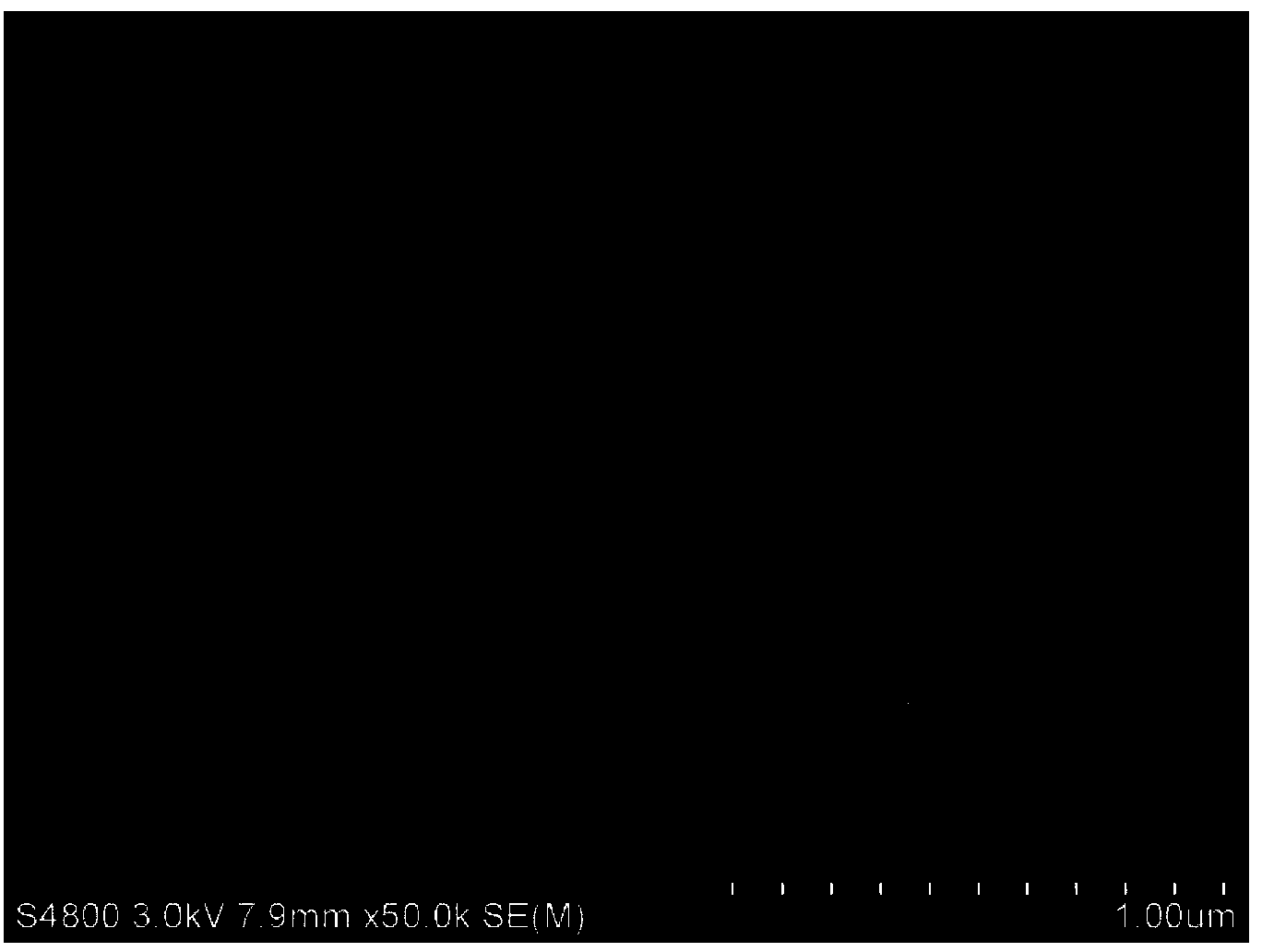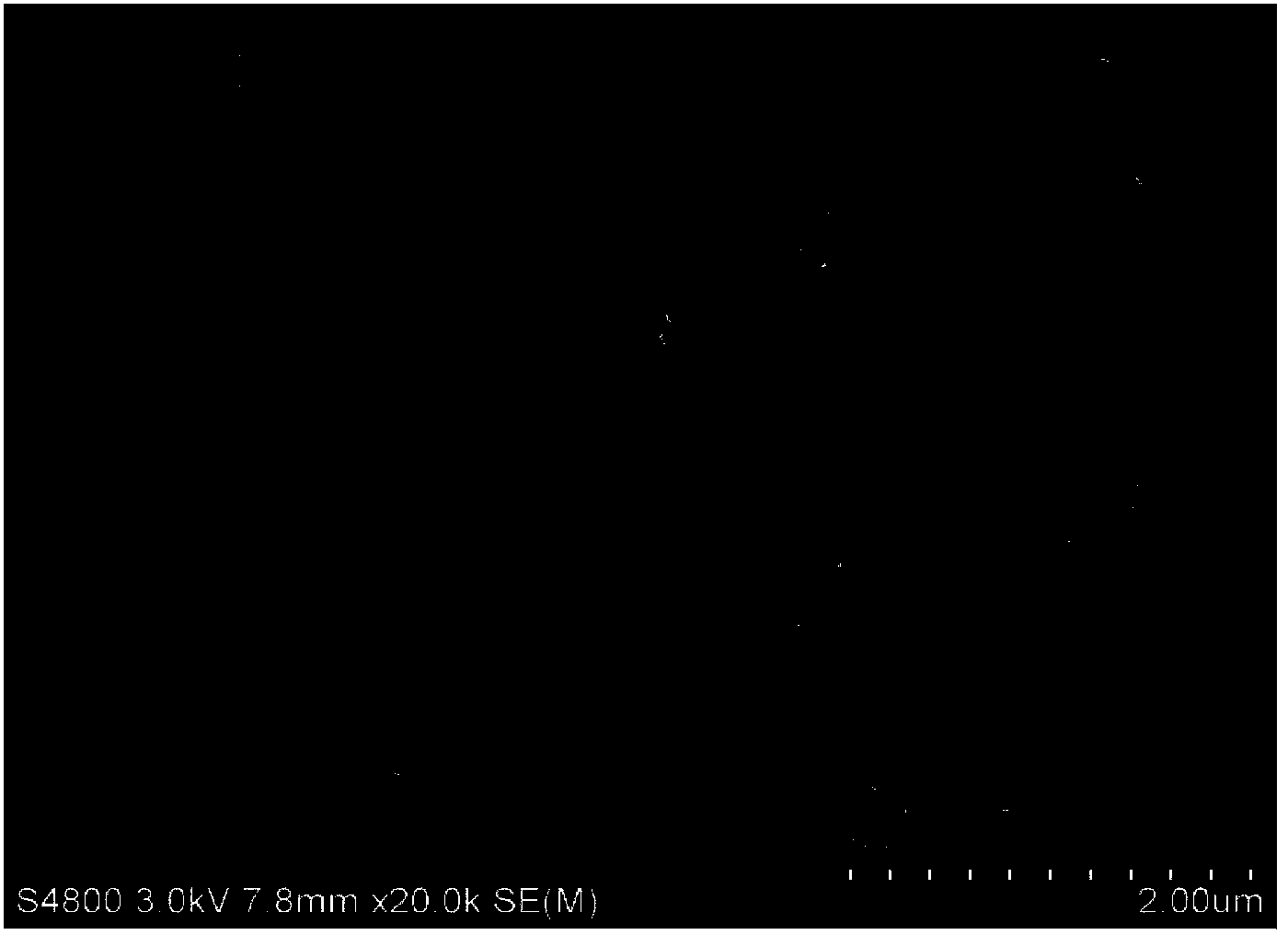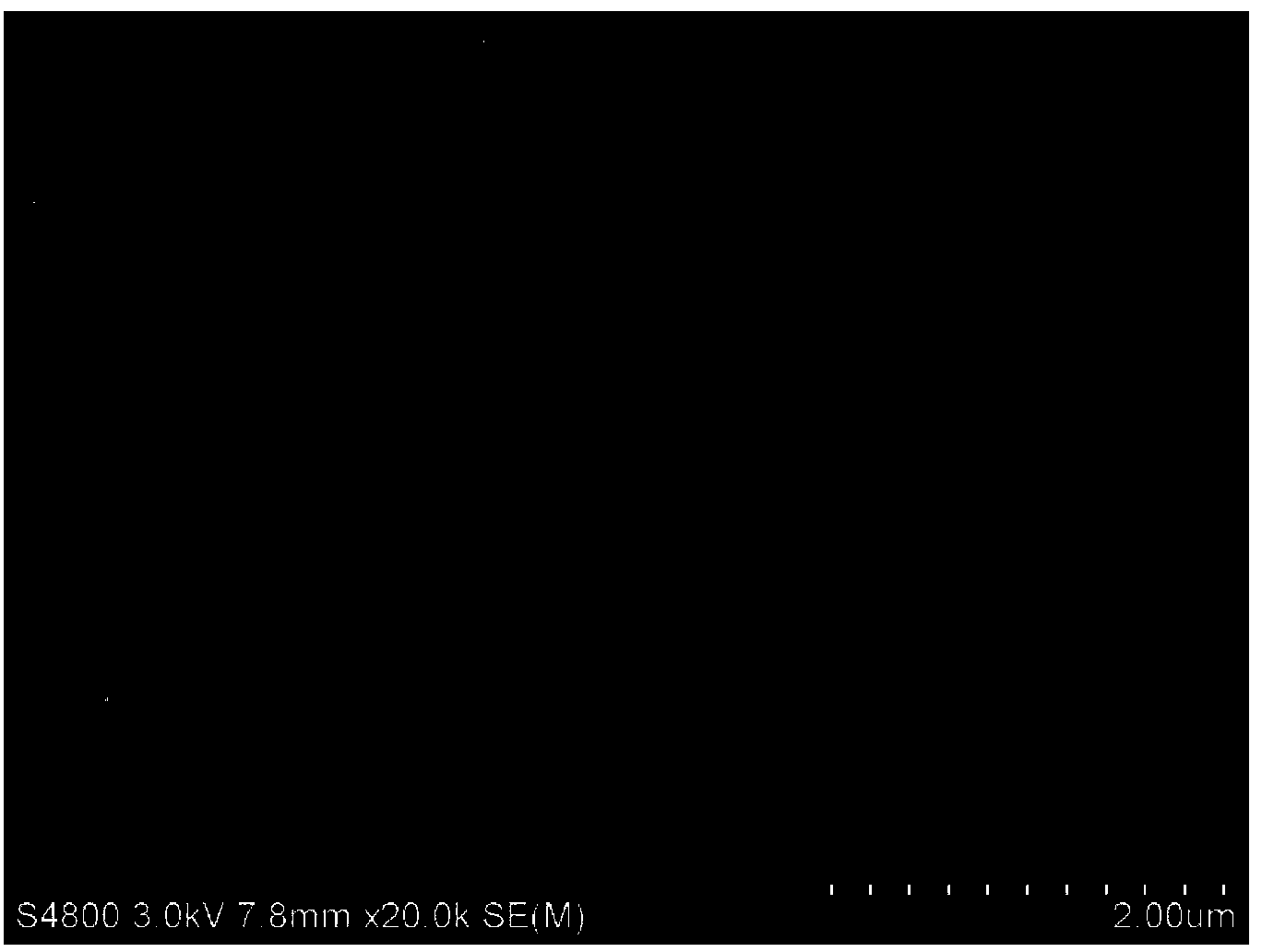Low-temperature nano lithium iron phosphate, and preparation method and application thereof
A low-temperature lithium iron phosphate technology, applied in the field of its preparation, low-temperature nano-lithium iron phosphate, can solve problems such as environmental pollution, large amounts of waste water, increased equipment investment and manufacturing costs, and shorten the diffusion distance and reduce primary particles The effect of particle size
- Summary
- Abstract
- Description
- Claims
- Application Information
AI Technical Summary
Problems solved by technology
Method used
Image
Examples
Embodiment 1
[0052] Lithium hydroxide, iron phosphate, ferrous oxalate and magnesium acetate are used in a molar ratio of 0.9:0.9:0.1:0.01 (equivalent to a molar ratio of lithium source, iron source, phosphorus source and doping elements of 0.9:1:0.9:0.01) Mix, and add ethanol according to 50% of the total mass of the material for ball milling, take out the slurry after 5 hours, and test the slurry particle size D 50 =1.8μm, dry the slurry at 80°C, put the dried powder in H 2 and N 2 (Constituent gas volume ratio H 2 :N 2 =0.1:0.9) in a mixed gas composed of 450 °C constant temperature roasting for 6 hours to obtain a precursor material with a particle size of 50-100 nm; add lithium hydroxide and phosphoric acid (85%) to this precursor material to make lithium source, iron The final molar ratio of phosphorus source and phosphorus source is 1:1:1, and 10% glucose by weight of the precursor material is added for mixing, and 50% of the total mass of the material is added with ethanol for b...
Embodiment 2
[0054] Lithium carbonate, ferrous oxalate, and ammonium dihydrogen phosphate are mixed according to the molar ratio of 0.95:1:0.95 (equivalent to the molar ratio of lithium source, iron source, phosphorus source and doping element is 0.95:1:0.95:0), and Add ethanol to 50% of the total mass of the material for ball milling, take out the slurry after 5 hours, and test the particle size D of the slurry 50 =2.1μm, dry the slurry at 80°C, and roast the dried powder at a constant temperature of 400°C for 3 hours in a protective atmosphere composed of argon to obtain a precursor material with a particle size of 100-150nm; Add lithium dihydrogen phosphate to the material so that the final molar ratio of lithium source, iron source and phosphorus source is 1.05:1:1.05, and add 8% sucrose by weight of the precursor material for mixing, and add ethanol according to 50% of the total mass of the material Perform ball milling, take out the slurry after 5 hours, dry at 80°C, and roast the dr...
Embodiment 3
[0056] Lithium dihydrogen phosphate, ferric oxide, and vanadium pentoxide are prepared at a molar ratio of 0.98:1:0.015 (equivalent to a molar ratio of lithium source, iron source, phosphorus source, and doping element of 0.98:1:0.98:003). Mix, and add ethanol according to 50% of the total mass of the material for ball milling, take out the slurry after 5 hours, and test the particle size D of the slurry 50 =1.2μm, dry the slurry at 80°C, put the dried powder in H 2 Roasting at a constant temperature of 600°C for 10 hours in a reducing atmosphere to obtain a precursor material with a particle size of 150-200 nm; add lithium acetate and diammonium hydrogen phosphate to the precursor material so that the final molar ratio of lithium source, iron source and phosphorus source is 1.1:1:1.1, and add polyvinyl alcohol with 15% of the weight of the precursor material for mixing, and add ethanol for ball milling according to 50% of the total mass of the material, take out the slurry af...
PUM
| Property | Measurement | Unit |
|---|---|---|
| Particle size | aaaaa | aaaaa |
| Granularity | aaaaa | aaaaa |
| Particle size | aaaaa | aaaaa |
Abstract
Description
Claims
Application Information
 Login to View More
Login to View More - Generate Ideas
- Intellectual Property
- Life Sciences
- Materials
- Tech Scout
- Unparalleled Data Quality
- Higher Quality Content
- 60% Fewer Hallucinations
Browse by: Latest US Patents, China's latest patents, Technical Efficacy Thesaurus, Application Domain, Technology Topic, Popular Technical Reports.
© 2025 PatSnap. All rights reserved.Legal|Privacy policy|Modern Slavery Act Transparency Statement|Sitemap|About US| Contact US: help@patsnap.com



